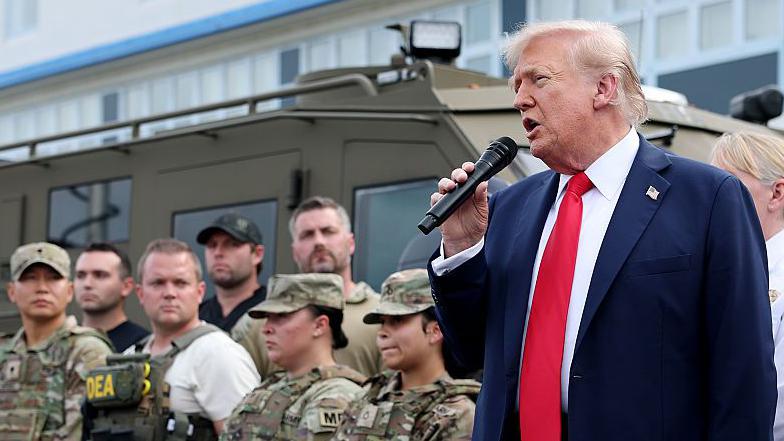Report on US Security Measures Following Iran Nuclear Facility Bombing
Context and Immediate Response
Following the US bombing of nuclear facilities in Iran, officials across the United States have heightened their alert status. Although no specific threats have been identified, the Federal Bureau of Investigation (FBI) and the Department of Homeland Security (DHS) have engaged with governors and law enforcement agencies nationwide to address the increased threat environment.
Law Enforcement and Immigration Actions
- The FBI has reallocated some agents from immigration-related cases back to counter-terrorism efforts to better address emerging security concerns.
- Within two days of the Iranian strikes, US immigration officials arrested 11 Iranian citizens, including individuals with alleged ties to Iran’s military and paramilitary proxy groups.
- Authorities have not linked these arrests to any specific plots on US soil, and DHS has stated there are currently no credible threats to the United States.
Details of Arrests
- One individual arrested in Minnesota is a former member of the Islamic Revolutionary Guard with admitted connections to Hezbollah.
- Another detainee in Mississippi, residing in the US for eight years, was designated as a known or suspected terrorist by US authorities.
- A third individual arrested in Alabama reportedly served as a sniper in Iran’s military before relocating to the US in 2024.
Government Communications and Security Measures
- DHS and FBI conducted calls with state leaders and hundreds of law enforcement agencies to promote vigilance, particularly within communities potentially at risk, including the Jewish community.
- Republican lawmakers and former Trump administration officials have raised concerns about Iranian “sleeper cells” allegedly infiltrating the US under the Biden administration.
- Police patrols have increased nationwide at sensitive sites connected to US or Israeli governments and Jewish communities.
Historical Context and Threat Assessment
Iran has a documented history of sponsoring violent attacks in the US, including:
- The assassination of an Iranian dissident in Maryland shortly after Iran’s Islamic Revolution in 1980.
- Recent US allegations of Iranian-planned assassinations targeting American officials, including former President Donald Trump and former National Security Adviser John Bolton.
Experts suggest that many arrests of individuals with Iranian ties have stemmed from sanctions violations, with some detainees under long-term surveillance. The recent arrests appear to be a strategic response to the escalation in US-Iran tensions.
National Terrorism Advisory System Bulletin
- The National Terrorism Advisory System issued a bulletin warning of a “heightened threat environment” in the US.
- It emphasized vigilance against potential low-level cyber attacks targeting US networks, although no specific threats were identified.
Security and Sustainable Development Goals (SDGs) Alignment
The US response to the heightened threat environment aligns with several Sustainable Development Goals (SDGs), including:
- SDG 16: Peace, Justice, and Strong Institutions – Strengthening national security institutions and promoting peaceful societies through proactive law enforcement and counter-terrorism efforts.
- SDG 9: Industry, Innovation, and Infrastructure – Protecting critical infrastructure and networks from cyber threats to ensure resilient and secure technological systems.
- SDG 10: Reduced Inequalities – Ensuring that security measures respect human rights and do not disproportionately target specific communities, fostering social inclusion and justice.
Conclusion
The US government continues to monitor and adapt its security posture in response to evolving international tensions, particularly with Iran. By reinforcing counter-terrorism operations and engaging with local and federal agencies, the US aims to safeguard its citizens and infrastructure. These efforts contribute to the broader global agenda of sustainable development by promoting peace, security, and resilient institutions.
1. Sustainable Development Goals (SDGs) Addressed or Connected to the Issues Highlighted in the Article
-
SDG 16: Peace, Justice and Strong Institutions
- The article discusses issues related to national security, counter-terrorism efforts, law enforcement vigilance, and the prevention of violent attacks, all of which connect directly to SDG 16’s focus on promoting peaceful and inclusive societies, providing access to justice, and building effective, accountable institutions.
-
SDG 10: Reduced Inequalities
- The article touches on immigration enforcement and deportation policies, which relate to SDG 10’s aim to reduce inequalities within and among countries, including those based on migration status.
-
SDG 9: Industry, Innovation and Infrastructure
- The mention of vigilance against “low-level cyber attacks against US networks” links to SDG 9’s target on building resilient infrastructure and promoting inclusive and sustainable industrialization and innovation, including cybersecurity.
2. Specific Targets Under Those SDGs Identified Based on the Article’s Content
-
Targets under SDG 16
- Target 16.1: Significantly reduce all forms of violence and related death rates everywhere.
- Target 16.3: Promote the rule of law at the national and international levels and ensure equal access to justice for all.
- Target 16.6: Develop effective, accountable and transparent institutions at all levels.
- Target 16.a: Strengthen relevant national institutions, including through international cooperation, for building capacity at all levels to prevent violence and combat terrorism and crime.
-
Targets under SDG 10
- Target 10.7: Facilitate orderly, safe, regular and responsible migration and mobility of people, including through implementation of planned and well-managed migration policies.
-
Targets under SDG 9
- Target 9.c: Significantly increase access to information and communications technology and strive to provide universal and affordable access to the Internet in least developed countries.
- Target 9.1: Develop quality, reliable, sustainable and resilient infrastructure, including regional and transborder infrastructure, to support economic development and human well-being.
3. Indicators Mentioned or Implied in the Article to Measure Progress Towards the Identified Targets
-
Indicators Related to SDG 16
- Number of arrests related to terrorism or national security threats (implied through arrests of individuals with alleged ties to terrorist groups).
- Frequency and effectiveness of law enforcement coordination and communication (implied by FBI and DHS calls with state and local agencies).
- Incidence of violent attacks or threats on national soil (implied through monitoring of threat environment and arrests).
- Resources allocated to counter-terrorism efforts (implied by FBI shifting agents back to counter-terrorism).
-
Indicators Related to SDG 10
- Number of immigrants arrested and deported under immigration enforcement policies.
- Implementation and enforcement of migration policies (implied by ICE and DHS activities).
-
Indicators Related to SDG 9
- Number and severity of cyber attacks detected on national infrastructure (implied by warnings about low-level cyber attacks).
- Measures of cybersecurity preparedness and response capabilities.
4. Table of SDGs, Targets and Indicators
| SDGs | Targets | Indicators |
|---|---|---|
| SDG 16: Peace, Justice and Strong Institutions |
|
|
| SDG 10: Reduced Inequalities |
|
|
| SDG 9: Industry, Innovation and Infrastructure |
|
|
Source: bbc.com







